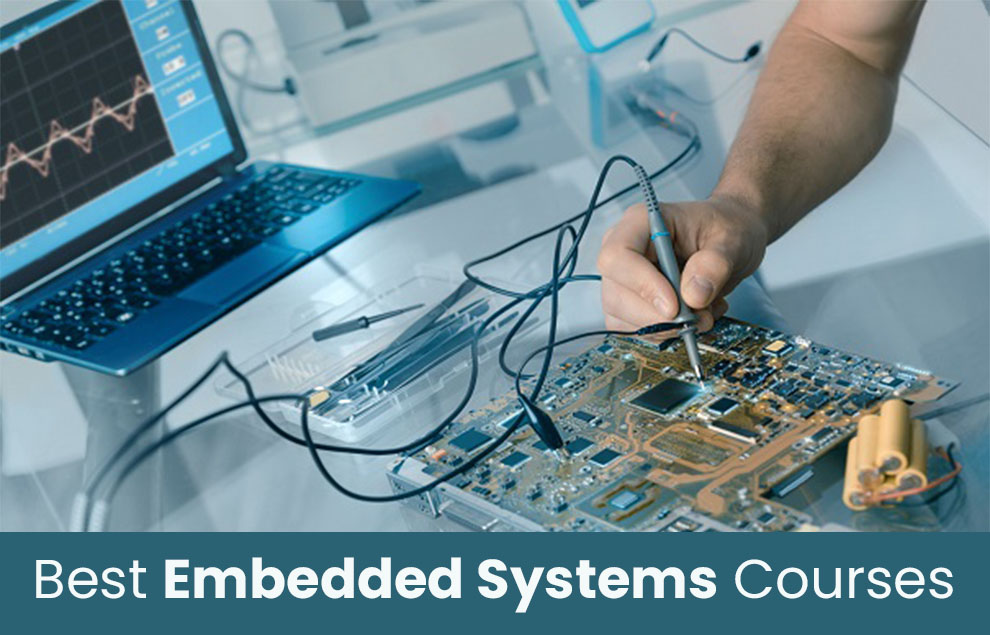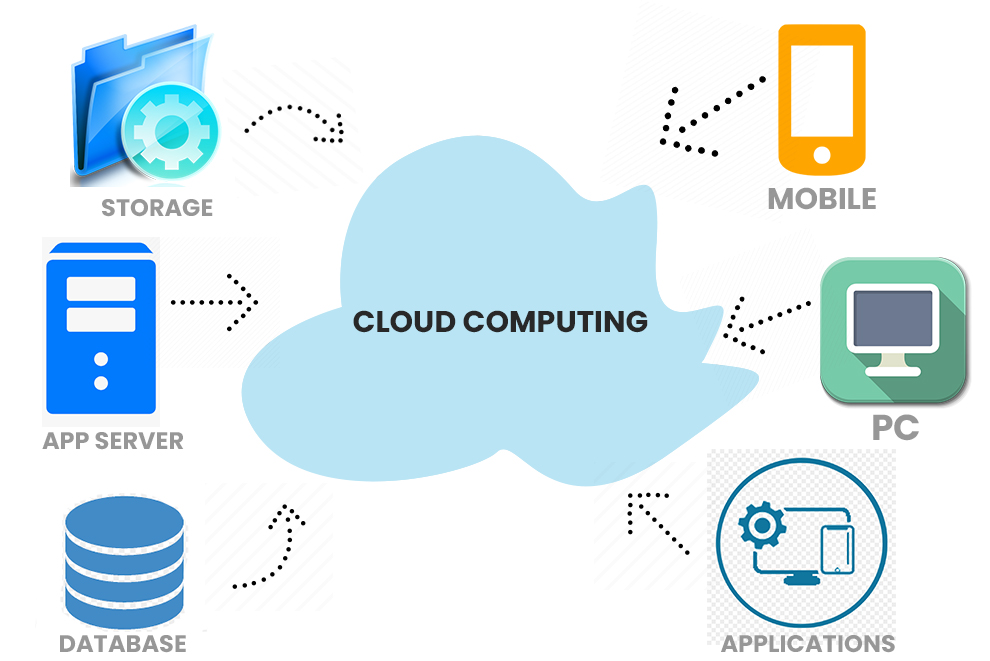Courtesy of the burgeoning demand for disruptive technologies, such as the 5G powered Internet of Things (IoT) and Artificial Intelligence, there is a rise in the popularity of embedded systems engineers.
What are embedded systems? You can think of embedded systems as the building blocks of the Arm-based technologies and connected world or a set of hardware & software systems joining hands together to perform a specific function.
These are today the industry standard. Hence, any new and upcoming engineer aspiring to unlock the boundless potential of the Fifth Wave of Computing will require a fundamental understanding of this important subject area.
For this, they will need to enroll in one of the best embedded systems online training programs. However, how do you pick the best course from the wide variety of the available embedded training online courses?
Well, here’s everything sorted for you!
Best Embedded Systems Online Courses and Classes
- Mastering Microcontroller and Embedded Driver Development – [Udemy]
- Professional Certificate in Embedded Systems Essentials with Arm – Arm Education – [edX]
- Embedded Systems Object-Oriented Programming in C/C++ – [Udemy]
- Embedded Systems with ARM Cortex and STM32 – [Udemy]
- Embedded Systems – Offered by Georgia Tech – [Udacity]
- Embedded Courses – [Coursera]
- Embedded Systems Programming: Getting Started – [Pluralsight]
- Embedded systems – [UCSC Silicon Valley Extension]
8 Best Embedded Training Online Programs
1. Mastering Microcontroller and Embedded Driver Development – [Udemy]
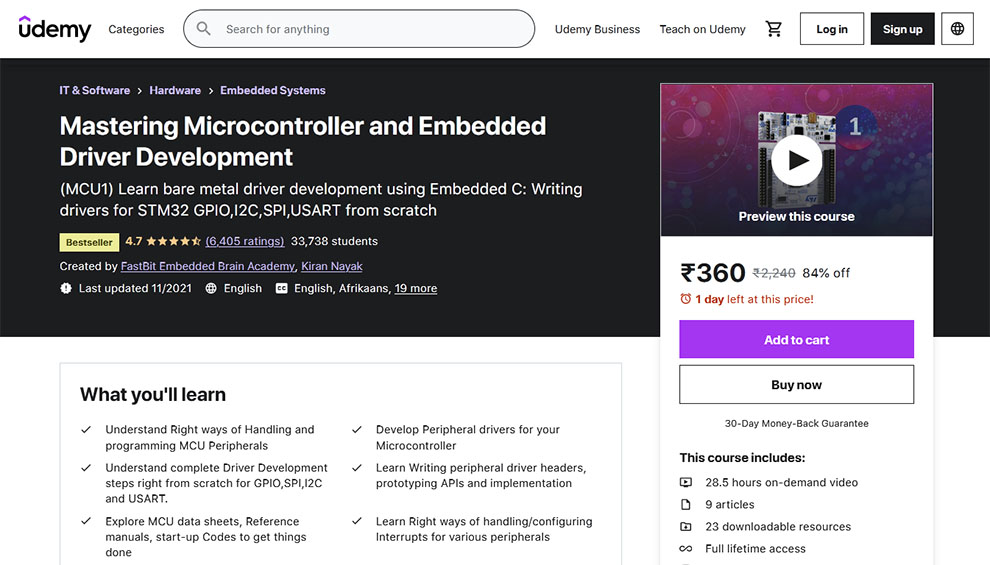
At number one on our list is the bestseller embedded systems online training. It is a 100% online course that you can start and end at your schedule. The best thing about this course is all the resources come with a lifetime guarantee.
| Rating | 4.6 |
| Enrolled | 33,513 students |
| Certification | Yes |
| Paid | Yes |
| Duration | 28.5 hours on-demand video |
| Return or refund policy | There are two options:
1. Subscribe to the plan – a 7-days trial, followed by a monthly subscription. You can cancel the subscription anytime, but the course will be available till the remaining length of the subscription period, and you won’t get any refund. 2. Alternatively, you can pay for the course as a personal plan and get a 30-day moneyback guarantee on it.
|
| Instructor | Kiran Nayak and FastBit Embedded Brain Academy |
| Cons | Some parts of this embedded systems online course are detailed, while others are only briefly touched upon. The instructor should try to strike a balance.
|
Learning Outcomes
You have a bundle of things to learn in this one of the best embedded systems online certificate course. These include:
- Understanding the proper technique to handle and program the MCU Peripherals
- Developing peripheral drivers for the microcontroller
- Understanding comprehensive driver development steps from scratch to the base up for USART, I2C, SPI, and GPIO
- Understanding the proper techniques to write peripheral driver headers, prototyping APIs, and their respective implementation
- Exploring reference manuals, MCU datasheets, and start-up codes to get things done.
- Knowing the right way to configure or handle interrupts for different peripherals
- Understanding about Peripheral Vector table/IRQs/or NVIC interfaces
- Demystifying behind the scene work details of USART, GPIOs, I2C, SPI, etc
- Getting well-acquainted with control registers, configuration, or the status of different peripherals
- Learning the drill to decode, capture, or analyze the traces of logic analyzer or serial protocols
- Understanding the correct technique to configure or enable peripheral clocks, baud rates, or serial clothes of different serial protocols
- Getting the knowledge on MCUs, AHB, or the APB bus protocols
- Learning about several types of MCU clocks, such as PLL, PCLK, HCLK, and others
- Exploring the latent MCU bus interface secretes, MCU clock configurations, clock sources, and others.
- Acquiring the necessary knowledge on Quick debugging ways for peripheral issues by working with different case studies
Prerequisites
To take up this embedded systems online certificate course, you will require:
- Fundamental knowledge of C programming
- For someone new to C programming and MCU, it is recommended to take the ‘Embedded C’ course to get clarity on the basics.
Who should take this course?
This embedded systems online training is ideal for:
- Professionals who aspire to explore Embedded systems
- Students and hobbyists who desire to start a career in the Embedded world
- People who think about embedded and need a refresher
However, this isn’t the best embedded systems online course for someone who needs quick prototyping using boards, such as Arduino.
Review Joshua Madero:
Very good and thoroughly explained course. I graduated from the best engineering school in Canada, and this course is at the level of most courses I took there – even though it costs 99% less .
2. Professional Certificate in Embedded Systems Essentials with Arm – Arm Education – [edX]
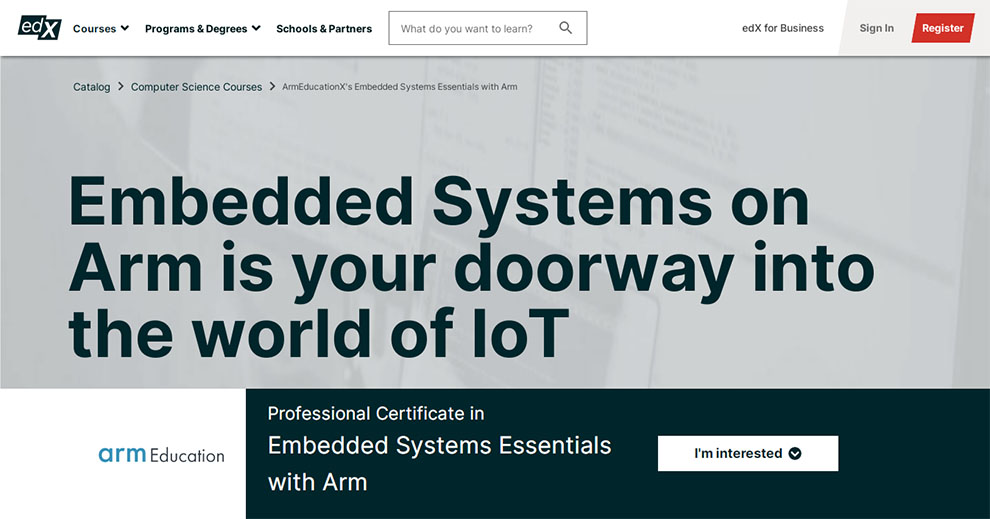
As part of this embedded systems online training, you will acquire every little foundational skill probably necessary to start your programming career and embedded systems design.
There are more than 180 billion Arm-based chips shipped to date. Further, a record 6.7 billion Cortex-M processors have been shipped in 2020’s last quarter.
Thus, it would not be wrong to say that Arm plays a significant role in the popularity and development of embedded devices. So, this is the best course to learn embedded systems online for anyone who aspires to build on their embedded devices knowledge.
This Program is a cluster of two parts or courses. In the Program’s Part 1, you will understand a general layout of the characteristics of an embedded system – constraints, components, and the benefits. This is all aided by the Arm’s Mbed API.
You can use and download the Mbed simulator on your computer to start prototyping and develop your microcontroller projects, sans any hardware.
Further, this is a hands-on course. So, you will also learn to use this newly acquired knowledge of analog I/O and digital I/O, low power features, interrupts, low power features, timer, and pulse width modulation to program an audio player and audio wave generator and control the peripherals along the way.
Now, you will head to Part 2 of this best embedded systems online certificate course. In this, you will build on the knowledge you acquired in Part 1 and combine the same with new foundational skills, focussing on Serial Communication and Real-Time Operating Systems (RTOS), as they’re applied to Arm Cortex-M microcontrollers.
Across the course, you will be working on a myriad of lab exercises with the affordable and popular ST Nucleo F401RE board, thereby getting you ready to acquire real-world experience in implementing these key concepts.
Further, the course provides you with seamless access to all the materials ever needed to develop your hardware-based embedded systems applications.
| Instructors | Mark Allen, Tim Wilmshurst, Shuojin Hang, and Khaled Benkrid |
| Paid | Both free and paid versions available |
| Certification | Optional |
| Return or refund policy | 14 days from the date of payment |
| Self-paced | Yes |
| Duration | 4 months (3 – 6 hours per week)
|
| Cons | Graded assignments and certification absent in free version |
Learning Outcomes
In this embedded systems online course, a few things that you will learn are:
- Implementing real-world embedded system projects on a simulated microcontroller using the Mbed API
- Getting well-acquainted with the hardware using a development board to establish working embedded prototypes
- Developing codes for different embedded systems applications, such as a music player and an audio wave generator, and controlling various peripherals with the pulse-width modulation, digital and analog I/O, timers, and interrupts.
- Understanding the importance and features of Serial Communications and RTOS in modern embedded systems design
- Developing a firm foundation to move towards complex programming, IoT, and the distributed sensing
- Implementing different projects in industry-standard
- Becoming thorough with the significant features of architectures and Arm processors as the fundamentals of modern embedded computing
- Developing a firm grip towards more complex programming, IoT, and distributed sensing
- Critical evaluation of the developed systems
Who should take this course?
This is an excellent course to learn embedded systems online for someone already familiar with electrical engineering or computer principles at an undergraduate level.
Prerequisites
For this embedded systems online certificate course, you must have a fundamental understanding of a programming language such as C/C++.
3. Embedded Systems Object-Oriented Programming in C/C++ – [Udemy]
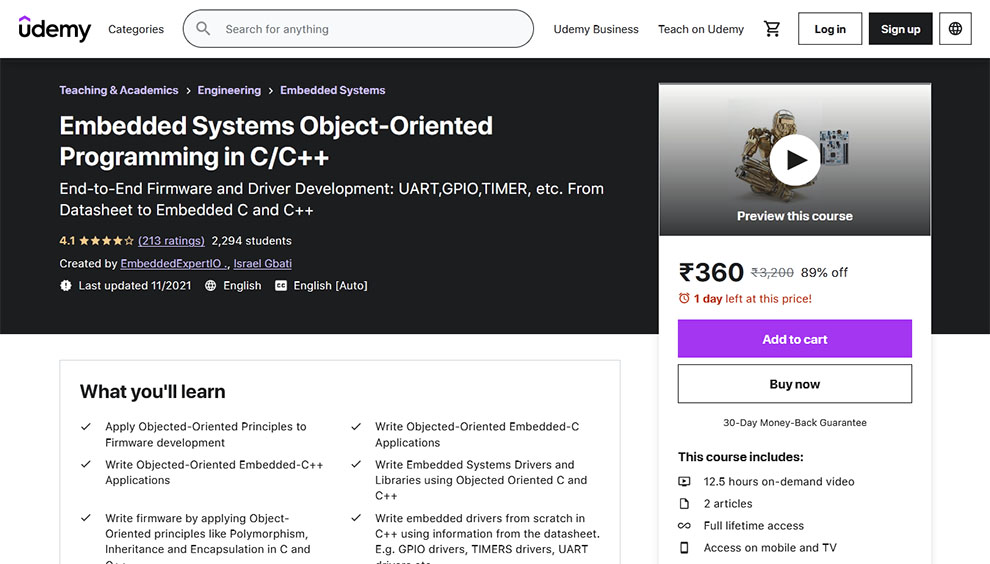
Are you done copy-pasting a code you do not understand? Then, this is the right online course for you. The course is focused on applying object-oriented principles to embedded firmware development. There is absolutely no filler or fluff in this course. Moreover, it is a straightforward course.
| Rating | 4.1 |
| Enrolled | 2,267 students |
| Duration | 12.5 hours on-demand video |
| Instructor | Israel Gbati and EmbeddedExpertIO . |
| Paid | Yes |
| Certification | Yes |
| Return or refund policy | 30-Day Money-Back Guarantee |
| Cons | Unfortunately, this course is not suitable for Mac users. |
Learning Outcomes
Some things you will learn in this embedded systems online certificate course are:
- Applying Objected-Oriented Principles to Firmware development
- Writing Objected-Oriented Embedded-C Applications
- Writing Embedded Systems Drivers with Objected Oriented C and C++
- Writing firmware by applying Object-Oriented principles, such as Inheritance, Polymorphism, and Encapsulation in C++ and C.
- Writing Objected-Oriented Embedded-C++ Applications
- Writing Libraries with Objected Oriented C and C++
- Writing embedded drivers from scratch in C++ with information from the datasheet, for instance, UART drivers, TIMERS drivers, GPIO drivers, and others.
- Writing embedded drivers from scratch in object-oriented C with information from the datasheet, for instance, UART drivers, TIMERS drivers, GPIO drivers, and more.
- Building every line of code from scratch by writing to the microcontroller’s memory space directly
- Analyzing the chip documentation
- Utilizing the debugger effectively to resolve and analyze the bugs
- Using header files or the no third party libraries
- Defining address for the different peripherals
- Creating registers from the addresses
- Developing proficiency in the embedded development skills and confidently progressing with it.
Prerequisites
To learn embedded systems online with this course, you will:
- Need NUCLEO-STM32F4 DEVELOPMENT BOARD
- Willingness and patience to learn
You do not need prior programming experience. Your instructor will teach everything from the base up.
Who should take this course?
This is the best embedded systems online course for anyone who aspires to better their embedded firmware development skills.
Further, this course will benefit:
- Anyone who is done with copying and pasting the code
- Anyone afraid of technical documentation, such as the datasheet of the chip and reference manual
- Someone who’s been experiencing bugs they do not understand
- People using third-party libraries and header files, such as StdPeriph, LL, and HAL.
- Beginners at embedded systems
4. Embedded Systems with ARM Cortex and STM32 – [Udemy]

When you need a course built with quality in mind and created from the base up to make you successful in embedded systems, this is the best embedded systems online training for you.
| Rating | 4.4 |
| Enrolled | 3,102 students |
| Duration | 7.5 hours on-demand video |
| Return or refund policy | 30-Day Money-Back Guarantee |
| Paid | Yes |
| Certification | Yes |
| Instructor | MakerMax Inc. and Akshay Gill |
| Cons | It is not the most comprehensive course. |
Learning Outcomes
This is the best embedded systems online course that will provide you with the following:
- In-depth understanding of the ARM Cortex fundamentals
- Knowledge of setting up a free and open-source toolchain on your computer to program
- Knowledge of the different kinds of exceptions on the ARM Cortex-M processor and their meaning
- Knowledge of setting up an open and free, debugging and flashing ARM-based microcontrollers
- Understanding of Vector Table Offset Register (VTOR) and its uses
- Learning what programmers models are
- Knowledge of working of the programmers model for an ARM Cortex-M
- Big Endian Format vs. Little Endian Format
- Learning about the different peripherals and their programming
- Knowledge of OpenOCD (Open on-chip debugger) and STCubeMX Application
- Learning how to generate HAL drivers
- Unprivileged and privileged software execution levels
- Feeling comfortable and confident with programming applications on the Cortex-M platform
- Hardware Abstraction Layer (HAL) Libraries and their utility
- Core register functionality, such as program counters, link registers, stack pointers, vector tables, and control registers
Prerequisites
To learn embedded systems online with this course, you will need:
- Fundamental knowledge of the embedded systems
- STM32 Nucleo development board is advised, but surely not mandatory
- Willingness to learn about ARM Cortex-M fundamentals
Who should take this course?
This is the best embedded systems online training for:
- An embedded systems enthusiast
- Someone who has worked with Arduino before
- Student or a professional struggling to commence programming on the ARM Cortex-M program
- Has fundamental knowledge of embedded systems
- Already been working with ARM Cortex microcontrollers
- Someone who wishes to develop a deeper understanding of the processor’s fundamentals
- Someone who has worked with 16-bit and 8-bit microcontrollers, wanting to venture into the world of 32-bit microcontrollers
Review chris yao:
Great course for anyone starting embedded system design.
5. Embedded Systems – Offered by Georgia Tech – [Udacity]

We are in the 21st century, and today, embedded systems are the future systems as smartphones, cellular phones, and tablets are all becoming significant platforms for communication and computing.
The ubiquity of information and the importance of computation, which envelopes it, has brought forth this revolution that is only amplified by the latest paradigms such as the Internet-of-Things (IoT).
Indeed, such platforms are invariably different when it comes to exquisite processing requirements – high performance, real-time needs, data segments, compact-code, and essentially, the ever-evolving software stack.
These requirements have resulted in an absolute reinvention and redesign of the software and hardware stack from the ground up. For instance, the latest processors, such as network processors, ARM, and DSPs, were launched to new virtual machines, like Dalvik, new operating systems, such as compiler optimizations, and Android and new programming models.
In this embedded systems online course, you will be studying with the industry pros. More so, the course comprises interactive quizzes, along with some rich and engaging content to encourage you towards better learning.
Overall, this course aims to acquire a holistic view of the embedded system stack with a focus on processor architectures, instruction sets, and the associated advanced compiler optimizations that take advantage of the same.
| Offered by | Georgia Tech |
| Paid | Free |
| Duration | Approx. 16 Weeks |
| Instructors | Santosh Pande and Catherine Gamboa |
| Skill level | Intermediate |
| Self-paced | Yes |
Learning Outcomes
It is a course to learn embedded systems online. Some things you will know are:
- Job-ready autonomous flight software engineering skills while working with advanced challenging
- Developing a systems understanding of the Flying Car full-stack
- Writing real code for real aircraft
Embedded Systems Online Course Topics
The topics covered in this embedded training online are:
LESSON 1
- Embedded Processor Architectures
- Instruction-Level Parallelism
- Design of Instruction Set Architectures
- Embedded Micro-architectures
LESSON 2
- Software Optimizations
- Compiler Phases
- Register Allocation Foundation
- Register Allocation for Embedded Processors
LESSON 3
- Advanced Optimizations
- Data Layouts for Embedded Processors
- Data and Code Compaction
- Network Processors
Prerequisites
To take this embedded systems online training, you must have previously taken an undergrad course in computer architecture. Further, students must also have a solid background in C++ or C.
Bonus Courses
1. Embedded Courses – [Coursera]

Coursera is one of the best websites to learn embedded systems online. They have a total of 117 best embedded systems online certificate courses.
You can segregate these best embedded systems online training programs based on language, level, duration, subject, skills, partner, and learning project.
From this filtration, you can pick the best embedded systems online course which meets your needs. A few courses from Coursera that caught our eye are:
- Real-Time Embedded Systems Specialization – Offered by University of Colorado Boulder
- Introduction to Embedded Systems Software and Development Environments – Offered by University of Colorado Boulder
- Embedded Software and Hardware Architecture – Offered by University of Colorado Boulder
- FPGA Design for Embedded Systems Specialization – Offered by University of Colorado Boulder
2. Embedded Systems Programming: Getting Started – [Pluralsight]

This embedded systems online course is presented to you by Jeremy Willden. The course is designed around the mobile device accessory project for measuring the bicycle distance and speed.
It is a short duration best embedded training online program of only 3 hours and 6 minutes. To be a successful embedded software developer, you must know about the limitations of the embedded processors.
Who should take this course?
This course presents microcontroller programming for beginners. However, even desktop software developers and experienced developers will enjoy this course.
Learning Outcomes
In this embedded systems online course, you will learn:
- Counter/timer modules
- Constituting peripherals such as analog and digital converters
- Refactoring and organization of the code
- Necessary skills for reading and writing I/O lines
- Writing interrupt service routines to handle real-time tasks quickly
- Serial interface or UART
- Adjusting processor’s clock system to balance performance and power consumption
- Exploring the analog and digital inputs and outputs
- Fundamentals of powerful debugging tools by putting the processor to sleep to extend the battery life of the system
- Building products as you like
3. Embedded systems – [UCSC Silicon Valley Extension]
![Embedded systems – [UCSC Silicon Valley Extension]](https://www.tangolearn.com/wp-content/uploads/2021/11/embedded-systems.jpg)
In an Embedded Systems certificate program, the Hardware professional students will study concepts, such as practical skills, design tools, and engineering principles.
They learn to be well-equipped with the gained knowledge and apply their understanding of the microcontrollers, digital signal processors, and microprocessors in course projects.
In addition, students also have the opportunity to focus on the communication system and function-specific computer systems such as:
- mobile devices,
- the Internet of Things,
- networking equipment,
- industrial controllers, and
- military electronics.
Knowing the drill to test and design software and hardware innovations of the future as you prepare yourself for a high-paying industry job is precisely what this embedded systems online course will do for you.
You can complete this embedded systems online training in about nine to 12 months.For a better outcome, you can combine online learning with a good Embedded systems book.
Learning Outcomes
Some key objectives to learn embedded systems online with this certification program are:
- Knowledge of the fundamentals of the embedded hardware design
- Designing, synthesizing and debugging digital logic for IP cores, PGAs, and ASICS.
- Knowing the difference between different jitters
- Using digital switch-mode power supplies
- Using analog
- Decoding IO technologies, such as PCI Express, Ethernet, and Fibre Channel
Related read: Difference Between Software Engineer and Software Developer
Conclusion
So, these are the eight best embedded training online programs. We have sincerely tried to include every precise detail on these embedded systems online courses.
However, you must visit the attached links for certain information such as the course fee, enrollment date, instructor bio, and reviews.

